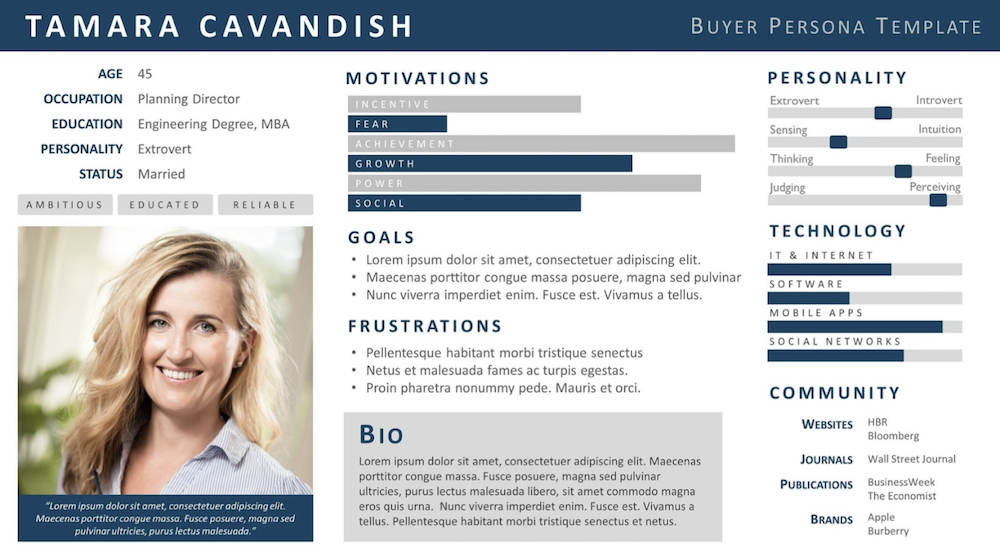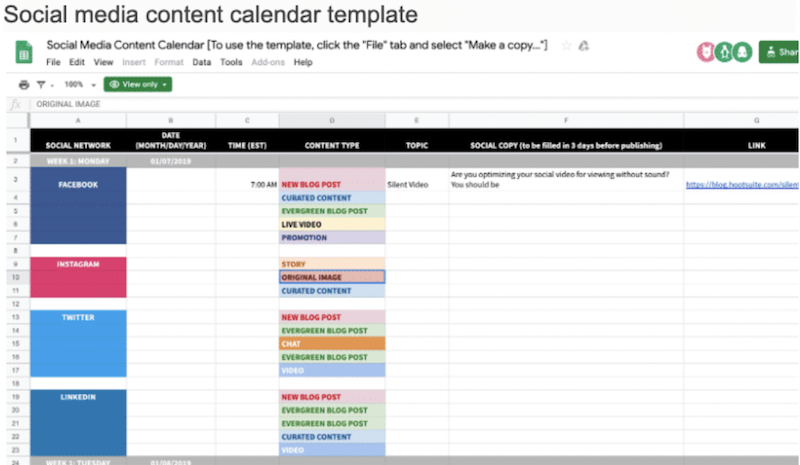Image by Sergey Nivens – Shutterstock
Marketing is an essential business consideration any entrepreneur should consider before getting started. After all, if potential customers or clients don’t know about you in the first place, how can you have a successful business?
There are numerous marketing channels available, and which works best for you depends on your budget and the nature of your business. Among the most popular and most effective marketing methods among entrepreneurs is content marketing.
Content marketing can be very effective in helping to increase brand visibility and generate revenue. As with other aspects of marketing, however, a thorough plan is necessary for your content strategy to be successful.
Let’s take a look at some of the most important steps to consider when planning your content strategy.
1. Set Your Goals
You can’t know if your new business venture is heading in the right direction if you don’t know the destination. Ask yourself what your goals are. Do you want to increase visibility? Answer questions or concerns about your product?
Recognizing these goals is the first step to creating a plan that will have the impact you want.
Setting goals will help you with another important step — establishing which KPIs you should be following. Without KPIs, it can be very difficult to know how well your venture is performing and where improvement is needed. With the right information at hand, however, you can make adjustments to your strategy as required.
2. Know Your Audience
No matter the type of marketing campaign you are planning, you should always know your audience. Content marketing is no exception. It is important to know what your audience’s concerns are, their likes and dislikes, their needs, and generally what makes them tick.
With an understanding of who your audience is, your campaign will be much more effective at pushing the right buttons, and this will help your prospects see you are the right company for them.
One way to help you achieve this is to create buyer personas, which are breakdowns of some of your prospects’ most typical and relevant characteristics. This will help you create content that is focused on them. And that will help you demonstrate your value to your prospects, showing them how it’s in their best interests to do business with you.

An example of a buyer persona. (Image Source)
3. Choose the Types of Content You Will Use
Content comes in a variety of forms: blogs, articles, video, audio, and even quizzes, to name a few. Some types, like video, might be too expensive for some startup businesses.
However, blogs and articles can be very effective and don’t require a huge budget.
When choosing which type of content to use for your small business, consider the nature of your product. If the product is video-related, for example, then video content would be expected by many prospects.
Also, make sure to run an audit of what content is already available to you. A lot of content that’s already been used can be used again or at least adapted. This will help to reduce the costs involved in getting your business off the ground.
4. Select Your Platforms
Take into account where your content will be published. Will it appear on your website, third-party sites, social media accounts, TV, radio, billboards, or digital signage?
There are many options to choose from, and which is best for you will depend on a range of factors such as the nature of your product and your budget.
Traditional advertising methods like TV and billboards tend to be costly and cost-inefficient for smaller businesses. This means their use tends to be restricted to large companies with a lot of resources that want to make their brand more visible.
Many entrepreneurs starting out prefer to use social media platforms because they are an affordable and effective way to reach a large audience. You can also use apps like the POWR social feed to help you get more likes and followers, which will build your audience further.
5. Create a Content Calendar
Don’t release all of your content at once. Instead, spread publication over a period of time so your audience has a steady stream of content. It should be enough to keep them interested but not so much that they become overwhelmed.
To help you achieve this, create a content calendar. This will help you know what has already been published and what is due to be published. It will also help to visualize whether or not the flow of content is steady.
Leverage platform analytics about when users are most likely to engage to plan your calendar.
Also consider using platforms that help you manage the publication of content. Platforms like Buffer and Hootsuite can help you arrange publishing content in advance, and this will help you manage your time better. Often, such platforms will let you publish on several platforms at the same time, potentially saving you a lot of time.

A social media content calendar can simplify content scheduling. (Image Source)
6. Create Content
Once your content strategy is in place, you need the main ingredient: content.
As mentioned, you can use or repurpose as much existing content as possible to save time and money. You can also create new content yourself or outsource it to others.
This can mean hiring new staff, although the preferred option for many entrepreneurs is to hire freelancers from sites like Fiverr or Upwork. There you can find many highly qualified and professional freelancers who can create the content you need.
Visual assets like infographics are easily shareable on social media. Shares can passively earn you backlinks over time, which will boost your website in the search engine results pages (SERPs).

Upwork is one of the leading sites for hiring freelancers. (Image Source)
7. Publish!
With everything ready to go, the next step is to start publishing your content. You don’t have to wait for all your content to be finished before you start posting — content creation is typically an ongoing process. Remember to maintain your calendar, keeping a record of what content has been posted and where.
8. Monitor
With everything up and running, monitor your content to see if it is getting the results you were hoping for. Don’t forget to refer to your KPIs to check that everything is going to plan.
Monitoring your content marketing campaign will help you see what type of content is working well, and what is not.
This will help you refine your campaign for the best results — and help you learn more about your audience. Even if a campaign does not go as you’d hoped, you can still learn a great deal of valuable information from it.
Plan for Success
If you follow the above steps, you’ll be well on your way to developing a plan that will help make your new business venture a success.
The importance of planning beforehand cannot be stressed enough if your campaign is to get the desired results.
If you have planned properly, it will help ensure everything else runs as smoothly as possible.

Our guest contributor, Nick Rubright, is the digital marketing specialist for Mvix. In his free time, Nicholas enjoys playing guitar, writing music, and building cool things on the internet.




